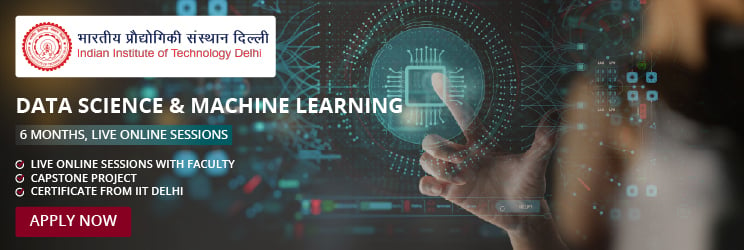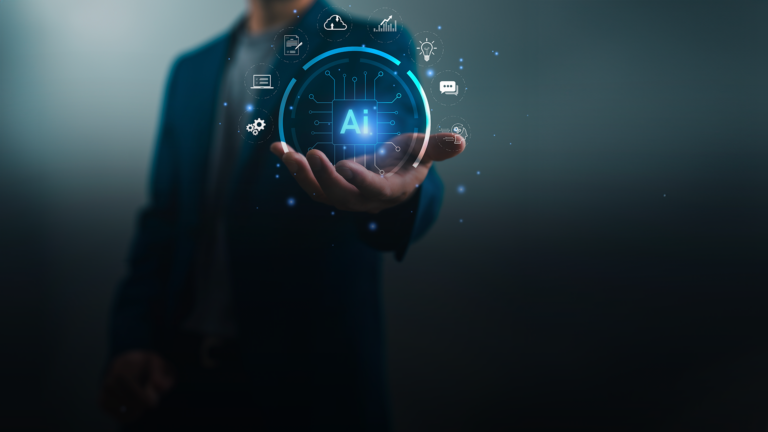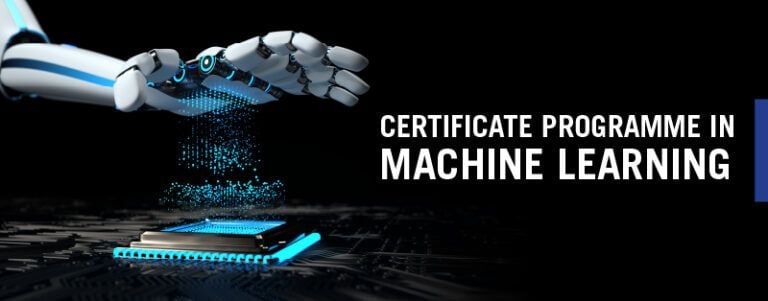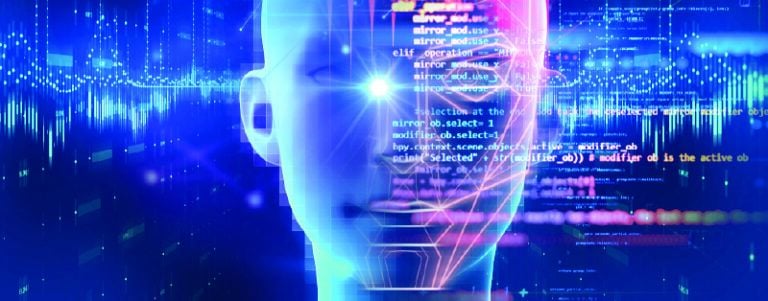Role of Artificial Intelligence and Machine Learning in Robotics
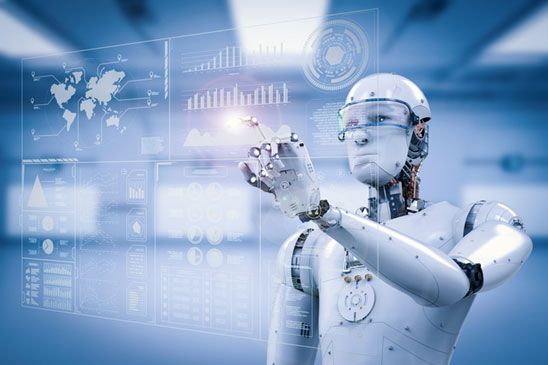
“Robotics are beginning to cross that line from absolutely primitive motion to motion that resembles animal or human behavior.” – J. J. Abrams
Fundamentally created in the early 1950s, robotics, today, is well-known as a self-operating machine with precisely trained and learned inputs, and its prevalence is omnipresent. The evolution of robotic intelligence shows a wide range of hierarchy since the time it was first created. Introduced to be deployed in factories for industrial use, it isn’t easy to find a sector where robotics is not used today. In the initial days of its advent, robots were merely designed for performing a trained set of repetitive tasks. By then, robotics was operating exclusively on Artificial Intelligence and Machine Learning. The 2000s trace the utilization of Artificial Intelligence in digitally programmed industrial robots. The global scenario has widely changed since then. Skillful integration of Machine Learning (AI) and robotics has been developed to advance the alleged ambit of robotic intelligence, enabling it to attain a sound human vision to detect potent stimuli. Huge algorithms and datasets go into this process of evolving the robotics potential into a human-like vision.
The discipline of Artificial Intelligence and Machine Learning is as prevalent as electricity in the modern contemporary world, and thus its use in robotics is also gaining importance. Precise machine learning processes are being used to train robots and improve accuracy. Artificial intelligence teaches functions like spatial relations, grasping objects, computer vision, motion control, etc., in robots to make them understand and work on unseen data and situations. These functions can be broadly accommodated into four categories:
- Vision– with AI at work, robotics attains the capability to visualize and detect patterns that they have never hitherto encountered. AI not only smoothens detection but also works on these patterns with far more accuracy than conventional robotics.
- Grasping- machine learning and artificial intelligence provide direction to the robots with knowledge of the most powerful position to grasp an object.
- Motion Control- control of locomotive parameters becomes extremely crucial to provide a human-like figure to a robot. Machine Learning is a gift to robotics in this aspect as it enables obstacle awareness and dynamic interaction.
- Data is the key to any project; only correct data make it successful.
The current generation of blending machine learning and robotics allegedly seems to be the most powerful combination in the history of technological innovations. A completely new era of automation is set to disrupt every possible institution of human civilization. AI-driven robots are considered more efficient than the ones without this technology. For instance, the industrial sector stands as the biggest consumer of functions like robotics and further automation, saving time and human effort and ensuring validity, accuracy, and minor errors. In such an occupied workspace, one cannot risk the security of the place with basic traditional robots. This is where artificial intelligence and machine learning come into the picture. AI provides robots with adequate computer vision and motion control to better understand the environment and act accordingly.
Similarly, machine learning conditions the robots in such a way that with timely evolution, they learn from their own mistakes, thus preventing constant human intervention and parallel effort. This ensures adaptability in robotics. Along with these implications, AI and ML certainly make manufacturing activities more efficient, especially for big labor-intensive companies; it also improves the available potential of robots.
Different branches of technology are combined to train robots to bring them to this level of functioning, such as deep learning (a subset of machine learning), image annotation techniques, semantic segmentation, etc.
APPLYING MACHINE LEARNING AND ARTIFICIAL INTELLIGENCE IN ROBOTICS IN VARIOUS SECTORS-
As highlighted above, AI and ML improve the efficacy of robotics, and in the current global scenario, it has left no sector untouched. Here is a glance at some sectors where robotics is deriving assistance from AI and ML.
1. Healthcare-
AI robotics is increasingly disrupting and transforming the healthcare market. ML-driven robotics is already a massive part of the healthcare chain, including function testing, surgery, research, data integration, etc. AI robotics is widely used to track patients’ health status, form a continuous supply chain of medication and other essentials around the hospital, and design custom health tasks for patients. AI and robotics are aiding the healthcare sector by providing assisting robots, precise diagnosis, and remote treatment. Robots’ proactive analysis allows them to detect minute and complex patterns in a patient’s health graph. Robots driven by machine learning are actively used in hospitals for micro-surgeries such as unclogging blood vessels. One of the biggest gifts of AI robotics to the healthcare industry is its operation in remote areas. Treatment in remote areas has been a major loophole in the medical sector for a long time. Robots can solitarily undergo several clinical tasks. Technology like bot-pill is a marvel of AI robotics.
2. Agriculture-
Integrating AI, ML, and Robotics provide agronomists with useful and actionable insights to help improve their farm productivity. By attaining this information, farmers ensure high yields and low operational costs, thus, stepping towards farm success. The primary fundamental of introducing robotics in farms is cutting down back-breaking labor efforts by automating farm activities like irrigation, seed distribution, pest control, and harvesting; you name it, and you have it. This renders the growers with much more time to focus on productive tasks. Emphasizing a major advantage of robotics of ensuring precision, it helps mitigate wastage of land potential, thus making a place for effective land use. Robotization of the green economy can help monitor quality enhancement, environmental conservation, and so on. The agricultural colony is gradually shifting towards these technologies, ensuring huge farm success in the wider picture. This creates a need for constant growth in AI-generated robots to improve the global agriculture scenario. The seeding of AI and robotics will result in sustainable development, which is also the focus of the UN and the world.
3. Warehouses-
Big companies with even larger warehouses are big consumers of robotics as it cuts operational time and intermediate costs. High-tech sensors allow these automated devices to operate independently in these huge warehouses. The sensors include visual, auditory, thermal, and haptic sensors. The introduction of the latter two in robotization is a gift of AI that ensures safety through a better perception of the surrounding. In a nutshell, these sensors are the decision-making body of the robots. Automated guided vehicles (AGVs) or automated guided carts (AGCs) are utilized for transporting stock from one place to another in a warehouse. The corporate world today works day and night, and therefore the presence of systems like AGSs or AGCs sustains 24*7 working with similar costs. Aerial drones are another innovation used in warehouses that sustain quick scanning and optimization of the current inventory within no time and with minimal effort. There are some clear benefits of adopting robotics- minimal errors, adaptability, safety, etc. robots are trained human-like figures which operate on acquired algorithms, thus, avoiding mistakes. Safety is a major advantage of robotics as it prevents workers from undergoing dangerous tasks such as pulling stocks from a height. Hence, robots take away mundane and risky tasks from workers.
4. Automobiles-
The role of robotics has a whole network of applications in the automotive industry ranging from designing, supply chain, and production activities to an entire set of management activities. Systems like driver assistance, autonomous driving, and driver risk assistance are being implemented in transportation for automobile industries. The automobile industry has been using robotic intelligence for more than 50 years. The only change from then to now is the advancement of AI and ML in this branch, which is a drastic one. The advantages of robotics in automobiles are widespread-
- Robotics provides an accurate vision for locating the required items. Basic errands like installing door panels, fenders, etc., can be easily carried out by robots.
- Assembling machine devices like motors, screws, pumps, etc.
- Robotic arms can be deployed in painting and coating.
- Along with assembling segregated parts, robots can also transfer these parts, including loading and unloading.
The current global scenario shows the widespread prevalence of innovations like artificial intelligence, machine learning, and robotics in almost every sector, be it agriculture, healthcare, education, automobiles, industries, and the list can go quite long. This suggests the constant requirement for better innovations and adequate awareness even in the remotest areas. Advancement in AI and ML robotics is on the massive influx. Artificial intelligence is not a luxury but a necessity that will come forward in the upcoming decades. Robotics aided by artificial intelligence and machine learning is all set to disrupt every sector, from pins to rockets.
~ Kapil Mahajan, Data Science Leader

